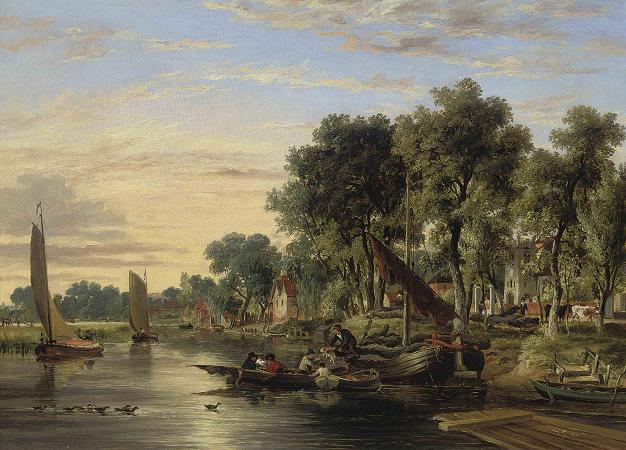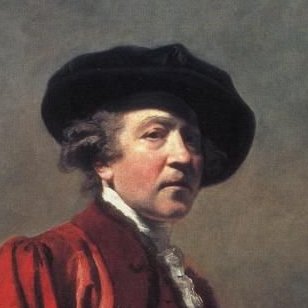James Stark (1794 - 1859). James Stark was an English landscape painter. A leading member of the Norwich School of painters, he was elected vice-president of the Norwich Society of Artists in 1828 and their president in 1829. He had wealthy patrons and was consistently praised by the Norfolk press for his successful London career. Stark was born in Norwich, the youngest son of an important dye manufacturer, Michael Stark, who is credited with the invention of the dye known as 'Norwich red'. On the completion of his education at Norwich School in 1811, he was apprenticed to John Crome, whose influence on his pupil was profound. His work was exhibited in London as early as 1811 and at the British Institution from 1814-18. In 1814 he moved away from Norwich to London, where he befriended the artist William Collins. In 1819 ill health forced him to return to Norwich, where lived for twenty years, before moving to Windsor in 1840, where he lived for a decade, continuing to produce landscapes. He returned to London in 1849, residing there until his death in 1859 at the age of 64. He is buried in the Rosary Cemetery in Norwich. Stark generally worked in oils, although his total included etchings, watercolours and pencil and chalk drawings. His early paintings were followed by landscapes depicting woodland scenes, which were often pastiches of the seventeenth century Dutch masters. His works during the 1830s, which were more successful, displayed a freshness that was previously lacking. In 1834 he published his admired Scenery of the Rivers of Norfolk, which contained thirty-six etchings produced by specialist engravers after his own paintings. Although this ambitious work was well-received at the time, as with similar works published by other artists it was financially unsuccessful. James Stark was born in Norwich on 19 November 1794, the son of Michael Stark and his wife Jane Ivory. He was christened on 30 November 1794 at the Church of St Michael Coslany, Norwich, close to the family home. James was the youngest son of eight siblings. His father Michael Stark was a Scottish-born dyer who had a considerable literary and scientific background, and who ran his own dyeing business on Duke Street, Norwich. He is credited with a number of innovations in the dyeing industry, including the invention of the formula of 'Norwich red'. James Stark showed a talent for art from an early age. He was educated at Norwich School, where he became friends with John Berney Crome. Two of his pencil drawings were exhibited in Norwich in 1809, and he exhibited for the first time in London in 1811, at the age of seventeen, when his painting A view on King Street river, Norwich was shown at the Royal Academy. Because of his poor health, which dogged him throughout his life, his ambitions to become a farmer were never realised. In 1811 he was apprenticed for three years to John Berney Crome's father, the landscape artist John Crome. Two letters from John Crome to his pupil survive. One, dated 3 July 1814 and sent to Starks' house in London, contains a reminder to submit work to the Norwich Society of Artists' forthcoming exhibition. The second letter reveals how Crome was able to impart his knowledge to his pupils. Amongst other suggestions, the letter encouraged Stark to consider using more breadth. Crome was a strong influence on Stark, who was his favourite pupil, and Crome's preoccupation with depicting trees and woodland scenes led Stark to produce many such scenes himself. He was elected as a member of the Norwich Society of Artists in 1812. He exhibited at the British Institution between 1814 and 1818, winning a prize of 50 pounds in 1818. In 1814, following the end of his Norwich apprenticeship, Stark moved to London. There he befriended and became influenced by the artist William Collins. In 1817 he became a student at the Royal Academy. The Bathing Place, Morning was sold in 1817 to the Henry Hobart, the Dean of Windsor. For a short period he shared lodgings with the portrait painter Joseph Clover. During this period he began to sell paintings to wealthy patrons: both the Marquis of Stafford and the Countess de Grey bought works from him. After only two years of study in London, debilitating ill health forced him to return to Norwich, where he remained for nearly twenty years, until his final move from the city in 1830. There he devoted himself to painting the scenery around the city and executing a series of paintings of Norfolk rivers, which were eventually engraved and published in 1834. On 7 July 1821 he married Elizabeth Younge Dinmore of King's Lynn.
more...







